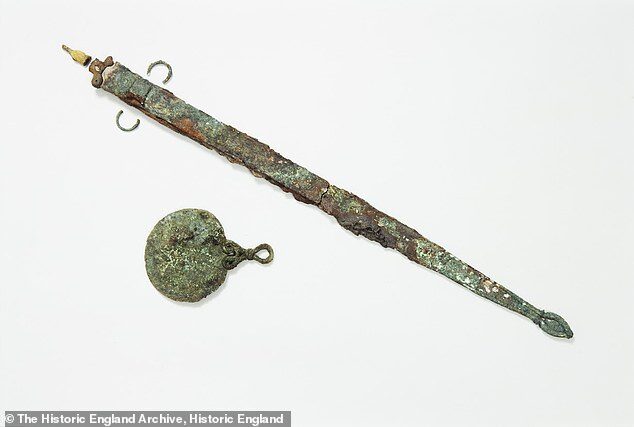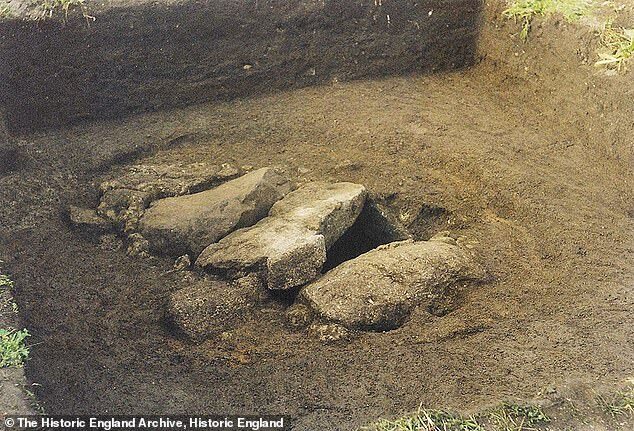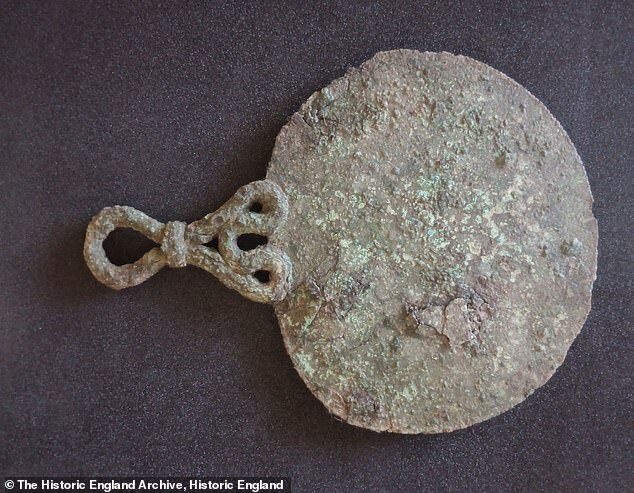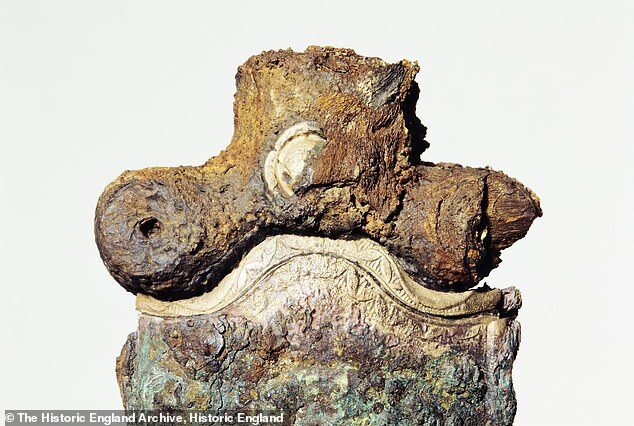
The long-running mystery of a prehistoric grave has finally been solved after years of scientific debate.
New research led by Historic England has unveiled that a 2,000-year-old Iron Age burial site on the Isles of Scilly actually belonged to a warrior woman.
Since its discovery in 1999, archaeologists have mulled back-and-forth over the sex of the individual that possessed both a mirror and a sword.
But new evidence suggests this woman may have been a leading figure - perhaps among many other 'hidden' female warriors during the Iron Age.
'Our findings offer an exciting opportunity to re-interpret this important burial,' said Sarah Stark, a human skeletal biologist at Historic England.

During the excavation 24 years ago, archaeologists found a copper alloy sword and a shield - both items that are commonly associated with males. But a bronze mirror, adorned with what appears to be a sun disc motif, also laid alongside it, which experts said would typically indicate the remains belonged to a woman.
To discover the correct sex, scientists had previously conducted DNA analysis and visual assessments. These efforts largely failed due to the quality of bones at the site which had deteriorated over the course of 2,000 years.
As part of the latest research, scientists instead analysed the protein from tiny pieces of surviving tooth enamel. These have become incredibly useful to researchers as they survive for much longer than DNA.
'Tooth enamel is the hardest and most durable substance in the human body,' said Glendon Parker, professor of environmental toxicology at the University of California at Davis.
'Tooth enamel is the hardest and most durable substance in the human body. It contains a protein with links to either the X or Y chromosome, which means it can be used to determine sex.'
Thanks to chromosome analysis, scientists now believe there is a 96 per cent chance that the individual was female.
This gives a whole new meaning to the mirror, sword and shield found at her grave.
During the British Iron Age, most warfare was likely to have been surprise attacks carried out by a war-party on enemy settlements.

These findings suggest that female involvement in prehistoric violence may have been more common than previously thought.
Ms Stark said: 'Although we can never know completely about the symbolism of objects found in graves, the combination of a sword and a mirror suggests this woman had high status within her community and may have played a commanding role in local warfare, organising or leading raids on rival groups.
This could suggest that female involvement in raiding and other types of violence was more common in Iron Age society than we've previously thought, and it could have laid the foundations from which leaders like Boudicca would later emerge.'
'It would be interesting to re-analyse other degraded burials to see if there are more "hidden" female warriors out there.'
The warrior's burial site is the richest Iron Age grave found to date in south-west England and is the only one in the region to contain weapons.
Both the sword and mirror are now on display at the Isles of Scilly Museum.
About Iron Age Briton:Reference: S. Mays, G. Parker, et al., Sex identification of a Late Iron Age sword and mirror cist burial from Hillside Farm, Bryher, Isles of Scilly, England, Journal of Archaeological Science: Reports, 2023, 104099, ISSN 2352-409X, doi.org/10.1016/j.jasrep.2023.104099.
The Iron Age in Britain started around 800BC and finished in 43AD when the Romans invaded.
As suggested by the name, this period saw large scale changes thanks to the introduction of iron working technology.
During this period the population of Britain probably exceeded one million. This was made possible by new forms of farming, such as the introduction of new varieties of barley and wheat. The invention of the iron-tipped plough made cultivating crops in heavy clay soils possible for the first time.
Some of the major advances during included the introduction of the potter's wheel, the lathe (used for woodworking) and rotary quern for grinding grain.
There are nearly 3,000 Iron Age hill forts in the UK. Some were used as permanent settlements, others were used as sites for gatherings, trade and religious activities. At the time most people were living in small farmsteads with extended families. The standard house was a roundhouse, made of timber or stone with a thatch or turf roof.
Burial practices were varied but it seems most people were disposed of by 'excarnation' - meaning they were left deliberately exposed. There are also some bog bodies preserved from this period, which show evidence of violent deaths in the form of ritual and sacrificial killing.
Towards the end of this period there was increasing Roman influence from the western Mediterranean and southern France. It seems that before the Roman conquest of England in 43AD they had already established connections with lots of tribes and could have exerted a degree of political influence. After 43AD all of Wales and England below Hadrian's Wall became part of the Roman empire, while Iron Age life in Scotland and Ireland continued for longer.




Comment: